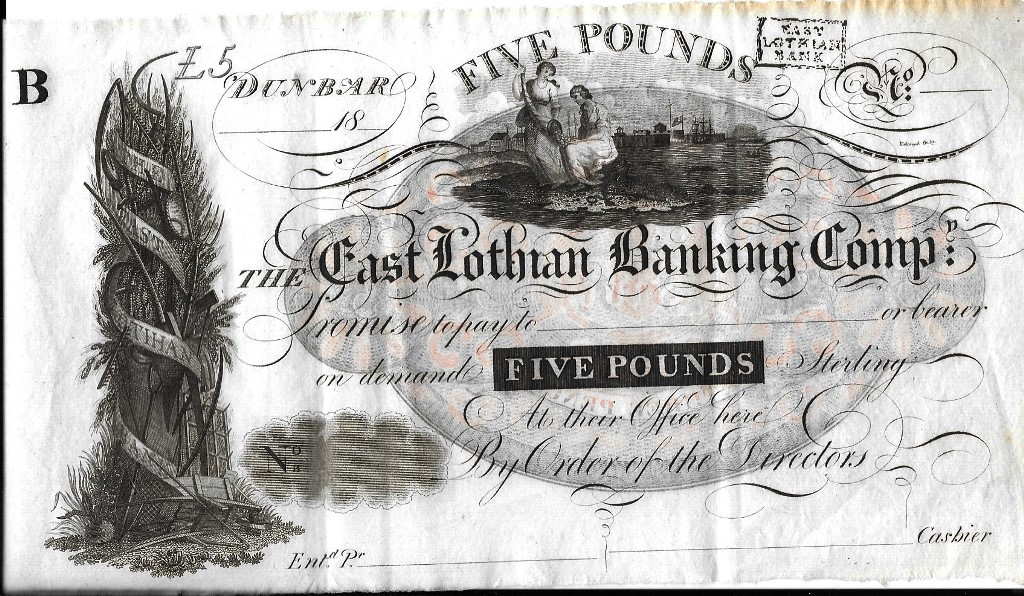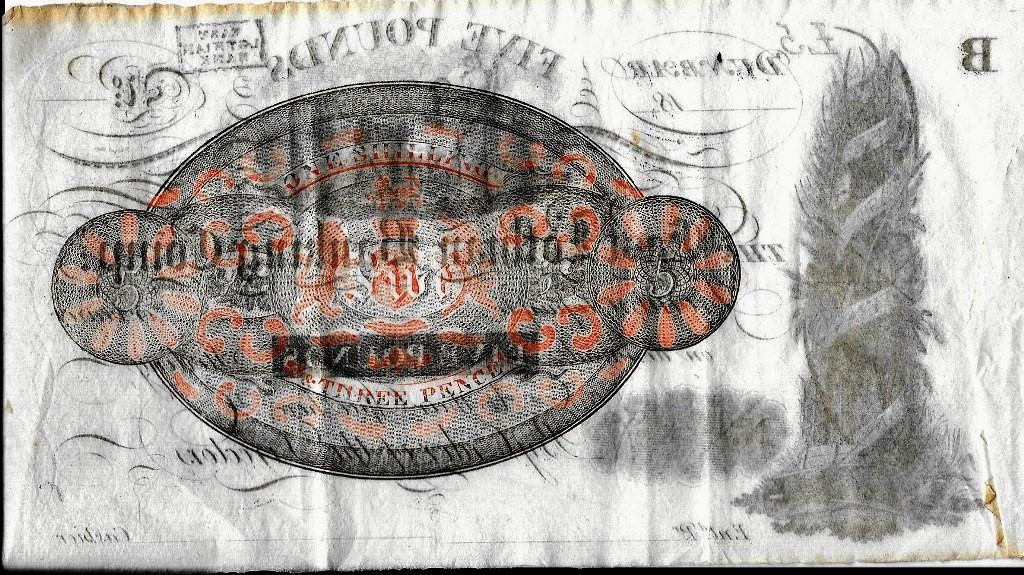This month features images of two bank notes from the East Lothian Banking Company which opened in 1810 in Dunbar, but had to close in 1822 when the Cashier (equivalent to Chief Executive) went off to the USA with much of the bank’s funds.

The photo above shows the front of the bank’s Five Pound note. If you enlarge the photo, you’ll see the images of the sea and of agriculture on the note. This reflects the nature of the Directors, many of whom were farmers, as well as the main employers in East Lothian at the time.
This photo shows the back of the Five Pound note and it was stamped to show that Stamp Duty had been paid by the bank before the notes could be issued. These “notes” were not in circulation like our notes today, but were more like cheques. Information received from Doug MacBeath, curator of the Museum on the Mound in Edinburgh (well worth a visit) indicates that the bank had a problem, in that while notes were printed in Scotland, they had to be sent to London for stamping, as there was no Tax Office in Scotland until the 1830s.
The front of the £1 note above was the same as that of the £5 note. You can see more of the £1 note on the left hand side than above on the £5 note, because the edge of this £5 note has not survived. Doug MacBeath also stated that these notes were unissued, as most of the surviving notes from this bank are. An issued note would have the name of the recipient and it would have been signed by or on behalf of The Cashier. The £1 note also carried the title of Twenty Shillings.
The back of this One pound note shows that the stamp duty at the time was 5 pence i.e. 5d in old money. An interesting fact from Doug MacBeath is that the stamps were designed by Sir William Congreve who was more famous for inventing rockets which were used in the war against Napoleon. Before this “the duty stamp was a dry, or embossed stamp on the front of the note”. Copies of these notes were donated to the Society by Morag Hastie.



You must be logged in to post a comment.